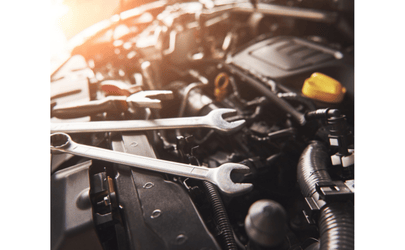Why Rural Mechanics in Latin America Are Turning to Mobile Diagnostic Apps

“The Latin America automotive diagnostics market is experiencing unique shifts shaped by local needs and technological adaptation. A key trend is the rise of mobile-based diagnostic apps designed for semi-urban mechanics with limited access to traditional tools. Additionally, refurbished diagnostic devices are gaining traction due to cost sensitivity among independent garages. There’s growing integration of diagnostics with telematics-based insurance models, enabling real-time fault sharing for dynamic premiums. Bilingual diagnostic interfaces in Spanish and Portuguese are being adopted across Brazil and Mexico, while solar-powered diagnostic kiosks are emerging in rural areas. OEMs are also collaborating with startups to offer lightweight, cloud-enabled platforms."
The Latin America automotive diagnostics market was valued at USD 1,687 million in 2024 and is estimated to reach a value of USD 3,216 million by 2030 with a CAGR of 11.6% during the forecast period.
The Latin American automotive diagnostics market is experiencing steady growth, fueled by the increasing necessity to maintain aging vehicle fleets and adhere to evolving emission and safety regulations. A 2023 report by Statista indicates that the average age of vehicles in Latin America surpasses 15 years, in contrast to 12 years in the U.S. and under 10 years in parts of Europe. This aging fleet intensifies the demand for diagnostic tools that can detect problems early, minimize breakdowns, and extend vehicle lifespan.
Brazil leads the region in demand for automotive diagnostics, owing to its substantial automotive manufacturing base and high vehicle ownership rates. As the largest vehicle market in LATAM, Brazil recorded sales of 2.1 million units in 2023 (ANFAVEA), with increasing adoption of diagnostics in both OEM service networks and independent repair shops. The tightening of inspection and maintenance regulations has resulted in a rising demand for OBD-II and advanced diagnostic scanners. For example, Brazil's introduction of Proconve L7 (akin to Euro 6) in 2022 has heightened the requirement for emission-specific diagnostics.
Moreover, the growth of commercial fleets and ride-sharing services throughout LATAM is further driving the adoption of diagnostic tools. Fleet management companies are increasingly utilizing predictive maintenance platforms powered by IoT and cloud diagnostics to reduce vehicle downtime and prolong asset life. These technologies enable businesses to anticipate mechanical issues before they evolve into more significant problems, enhancing operational efficiency.
Despite this growth, the market faces obstacles such as limited affordability and a lack of technological awareness among small and rural workshops. Many independent garages still depend on basic handheld devices, as the price range for a professional-grade scanner (USD 1,000–5,000) poses a significant barrier. However, increasing government initiatives to enforce emissions testing and rising consumer expectations for efficient service are fostering modernization. Furthermore, the expanding availability of low-cost, app-based diagnostic tools is helping to bridge the gap, making diagnostics more accessible to smaller players and stimulating demand across mid-tier cities in LATAM.